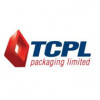Electrical Maintenance Technician
100+ Electrical Maintenance Technician Interview Questions and Answers

Asked in BHEL

Q. What is transformer? How many types of transformer, nd works, construction
A transformer is an electrical device that transfers electrical energy from one circuit to another through electromagnetic induction.
Transformers are used to increase or decrease the voltage of an alternating current (AC) power supply.
There are two main types of transformers: step-up transformers and step-down transformers.
Step-up transformers increase the voltage of the input power supply, while step-down transformers decrease the voltage.
Transformers are made up of two coil...read more

Asked in Emirates Global Aluminium

Q. How can you confirm the isolation before performing the preventive maintenance of an 11 kV power transformer?
Isolation can be confirmed by using a voltage detector, lockout/tagout procedures, and visual inspection.
Use a voltage detector to ensure that there is no voltage present in the transformer.
Follow lockout/tagout procedures to prevent accidental energization.
Visually inspect the transformer to ensure that all switches and breakers are in the off position.
Check the grounding system to ensure that it is properly installed and functioning.
Perform a phase rotation test to ensure t...read more
Electrical Maintenance Technician Interview Questions and Answers for Freshers
Asked in Logicon Facility Management

Q. What is circuit breaker? types of circuit breaker?
A circuit breaker is an electrical switch that automatically interrupts the flow of current in a circuit.
Circuit breakers are used to protect electrical circuits from overloads, short circuits, and faults.
They are designed to open and close the circuit under normal and abnormal conditions.
Common types of circuit breakers include thermal, magnetic, and thermal-magnetic circuit breakers.
Thermal circuit breakers use a bimetallic strip that bends when heated to open the circuit.
M...read more

Asked in Jindal Steel and Power

Q. What is a reverse forward control circuit, and can you draw its wiring diagram?
Reverse forward draw is a control wiring method used in electrical systems to control the direction of rotation of a motor.
Reverse forward draw is used to control the direction of rotation of a motor.
It involves the use of a forward contactor and a reverse contactor.
The control wiring includes connections between the contactors, motor, and power supply.
By energizing the forward contactor, the motor rotates in one direction, and by energizing the reverse contactor, the motor r...read more
Asked in Logicon Facility Management

Q. What is transformer?Types of transformer ?
A transformer is an electrical device that transfers electrical energy between two or more circuits through electromagnetic induction.
Transformers are used to increase or decrease the voltage in electrical power transmission and distribution systems.
They consist of two or more coils of wire, known as windings, that are wound around a core made of magnetic material.
The primary winding receives electrical energy from the input circuit and produces a magnetic field.
This magnetic...read more

Asked in BHEL

Q. What are single-phase and three-phase induction motors, and how do they work?
Single-phase and three-phase induction motors are AC motors used for various applications, differing in power supply and efficiency.
Single-phase induction motors are typically used in small appliances like fans and pumps.
Three-phase induction motors are more efficient and used in industrial applications like conveyor systems.
Single-phase motors require a starting mechanism, while three-phase motors can start directly.
Three-phase motors provide a smoother torque output compare...read more
Electrical Maintenance Technician Jobs




Asked in Kuwait Oil Company

Q. What is the purpose of a breather in a transformer?
The breather in a transformer is used to prevent moisture and dust from entering the transformer.
The breather contains a desiccant material that absorbs moisture from the air before it enters the transformer.
By preventing moisture from entering the transformer, the breather helps to maintain the insulation properties of the transformer oil.
The breather also filters out dust and other contaminants, ensuring the cleanliness of the transformer.
Regular maintenance of the breather...read more

Asked in APOLLO POWER SYSTEMS

Q. What is the voltage in a three-phase power system?
The voltage carrying in a 3 phase power system depends on the specific application and region.
In most industrial and commercial settings, the voltage carrying in a 3 phase power system is typically 208 volts, 240 volts, 480 volts, or 600 volts.
In residential settings, the voltage carrying in a 3 phase power system is usually 120/208 volts or 120/240 volts.
Different countries may have different standard voltage levels for 3 phase power systems. For example, in Europe, the stan...read more
Share interview questions and help millions of jobseekers 🌟

Asked in Logicon Facility Management

Q. What is generator? working principle of generator?
A generator is a device that converts mechanical energy into electrical energy.
Generators work on the principle of electromagnetic induction.
They consist of a rotor and a stator, with the rotor rotating inside the stator.
The rotation of the rotor creates a magnetic field, which induces an electrical current in the stator windings.
The electrical output of a generator can be AC or DC, depending on the design.
Examples of generators include hydroelectric generators, wind turbines...read more

Asked in Mtandt

Q. What is the difference between AC and DC motors?
AC motors and DC motors differ in their power source, construction, speed control, and applications.
AC motors run on alternating current, while DC motors run on direct current.
AC motors are more commonly used in household appliances, industrial machinery, and electric vehicles.
DC motors are often found in battery-powered devices, such as laptops, electric cars, and robots.
AC motors have a simpler construction with fewer parts, while DC motors have a more complex design.
AC mot...read more

Asked in John Deere

Q. What kind of work do you do in maintenance and what do you check?
Mentorus mein electrical systems ki maintenance, troubleshooting aur safety checks karte hain.
Electrical equipment ki regular maintenance karna, jaise motors aur transformers.
Faulty wiring ya connections ko identify aur repair karna.
Safety protocols ko follow karna, jaise lockout/tagout procedures.
Preventive maintenance schedules banana aur unhe implement karna.
Testing aur calibration of electrical instruments, jaise multimeters aur oscilloscopes.

Asked in Godrej Industries Group

Q. How many types of transformers are there?
There are several types of transformers used in electrical systems.
Transformers can be classified based on their construction, function, and application.
Some common types include power transformers, distribution transformers, autotransformers, isolation transformers, and instrument transformers.
Power transformers are used to step up or step down voltage in power transmission systems.
Distribution transformers are used to distribute power to homes and businesses.
Autotransformer...read more

Asked in MAK Controls & Systems

Q. What are the differences between direct current (DC) and alternating current (AC)?
DC flows in one direction, while AC changes direction periodically, affecting their applications and characteristics.
DC (Direct Current) flows steadily in one direction, e.g., batteries.
AC (Alternating Current) changes direction periodically, e.g., household outlets.
DC is used in low-voltage applications like electronics and batteries.
AC is used for high-voltage power transmission and household appliances.
DC voltage remains constant, while AC voltage varies sinusoidally over ...read more

Q. What is the function of a PLC and its process?
PLC stands for Programmable Logic Controller, used to automate industrial processes by controlling machinery and equipment.
PLC is a digital computer used to control automation processes in industries.
It receives input signals from sensors or switches, processes the data, and triggers outputs based on the programmed logic.
PLCs are programmed using ladder logic or other programming languages.
They are commonly used in manufacturing, automotive, and energy industries.
Examples of ...read more

Asked in Tata Steel

Q. What is the unit of resistance?
The unit of resistance is Ohm (Ω).
The unit of resistance is denoted by the symbol Ω (Ohm)
Resistance is measured in Ohms
Named after German physicist Georg Simon Ohm
Commonly used in electrical circuits

Asked in Associated Road Carriers

Q. Working process of generator Working process of transformer What is converter Inverter
Generators convert mechanical energy into electrical energy. Transformers change voltage levels. Converters and inverters change DC to AC and vice versa.
Generators use a rotating shaft to turn a magnetic field, creating electrical energy
Transformers use electromagnetic induction to change voltage levels
Converters change DC to AC or AC to DC, commonly used in power electronics
Inverters change DC to AC, commonly used in solar power systems
Asked in Logicon Facility Management

Q. What is a starter and a starter circuit?
A starter is an electrical device that starts and stops a motor by providing the necessary power to it. The starter circuit is the electrical circuit that controls the starter.
A starter is typically composed of a contactor, overload relay, and control circuit.
The starter circuit includes components such as switches, relays, fuses, and wiring.
The starter circuit is responsible for providing power to the starter and ensuring that the motor starts and stops safely.
Starter circui...read more
Asked in Logicon Facility Management

Q. What is mcb? working principle of mcb?
MCB stands for Miniature Circuit Breaker. It is an electrical switch that automatically trips when the current exceeds its rating.
MCB is a type of circuit breaker that is commonly used in residential and commercial buildings.
It is designed to protect electrical circuits from damage caused by overloading or short circuits.
The working principle of MCB is based on the thermal and magnetic properties of the materials used in its construction.
When the current flowing through the M...read more

Asked in Jindal Steel and Power

Q. What is a relay and what does it do?
A relay is an electrical device that acts as a switch to control the flow of current in an electrical circuit.
Relays are used to control high-power devices with low-power signals.
They consist of an electromagnet and a set of contacts.
When the electromagnet is energized, it creates a magnetic field that attracts or releases the contacts, allowing or interrupting the flow of current.
Relays are commonly used in industrial automation, automotive systems, and control circuits.
For ...read more

Asked in Venus Remedies

Q. Why is a star-delta starter used in induction motors?
Star delta starter is used in induction motors to reduce starting current and torque.
Reduces starting current by starting the motor in star connection and then switching to delta connection
Reduces starting torque to prevent mechanical stress on the motor and connected equipment
Suitable for applications where high starting current and torque are not required, such as fans, pumps, and compressors

Asked in Jindal Steel and Power

Q. What is a timer and what does it do?
A timer is a device that measures and controls the passage of time.
A timer is used to initiate or stop a process at a specific time or after a specific duration.
Timers can be mechanical or electronic.
They are commonly used in various applications such as appliances, industrial machinery, and automation systems.
Examples of timers include kitchen timers, programmable thermostats, and countdown timers in sports events.

Asked in Microlink Solutions

Q. Are you comfortable performing all maintenance tasks and services?

Asked in Galfar

Q. What is an earth leakage circuit breaker?
An earth leakage circuit breaker is a safety device that detects and interrupts electrical leakage to earth.
Also known as a ground fault circuit interrupter (GFCI)
Protects against electric shock and fire hazards
Monitors the current flowing through the circuit and trips if it detects a leakage to earth
Commonly used in bathrooms, kitchens, and outdoor areas where water is present

Asked in Associated Road Carriers

Q. Uses of bussbar What is fuse What is mcb, rccba
Bussbars are used to distribute electrical power while fuses and MCBs are protective devices used to prevent overloading and short circuits.
Bussbars are made of copper or aluminum and are used to distribute electrical power to various components in a system.
Fuses are protective devices that are designed to break the circuit when there is an overload or short circuit. They contain a metal wire or filament that melts when the current exceeds a certain level.
MCBs (Miniature Circ...read more

Asked in Shree Cement

Q. What are the different types of three-phase motors?
There are several types of three-phase motor.
Three-phase induction motor
Synchronous motor
Brushless DC motor
Wound rotor motor
Permanent magnet motor

Asked in Magna International

Q. What is voltage and how do you define it?
Voltage is the difference in electric potential between two points in a circuit, measured in volts.
Voltage is the force that pushes electric current through a circuit
It is measured in volts (V)
Voltage is the potential difference between two points in a circuit
Higher voltage means more energy available to move electrons
Voltage can be DC (direct current) or AC (alternating current)

Asked in Jindal Steel and Power

Q. What is a PLC and what does it do?
PLC stands for Programmable Logic Controller. It is a digital computer used for automation of electromechanical processes.
PLC is a specialized computer designed to control industrial processes.
It uses a programmable memory to store instructions and execute them in a sequential manner.
PLCs are commonly used in manufacturing plants, power stations, and other industrial settings.
They can be programmed to control various devices such as motors, valves, sensors, and switches.
PLCs ...read more

Asked in Galfar

Q. What is a DOL motor starter?
A DOL motor starter is a direct-on-line motor starter used to start and stop motors without any speed control.
DOL stands for Direct-On-Line.
It is the simplest and most common type of motor starter.
It directly connects the motor to the power supply, providing full voltage at start.
It does not provide any speed control or soft starting.
DOL starters are typically used for small motors with low starting torque requirements.
They are commonly found in applications like pumps, fans,...read more

Asked in Amaron Batteries

Q. Answer: there are following 5 main types of electric circut
The 5 main types of electric circuits are series, parallel, series-parallel, complex, and RC circuits.
Series circuits have all components connected in a single loop
Parallel circuits have components connected in multiple branches
Series-parallel circuits have a combination of series and parallel connections
Complex circuits have multiple loops and branches
RC circuits have a resistor and capacitor connected in series or parallel

Asked in TCPL Packaging

Q. Our company follows safety regulations during working hours. What are your thoughts on this?
Interview Questions of Similar Designations
Interview Experiences of Popular Companies









Reviews
Interviews
Salaries
Users


















